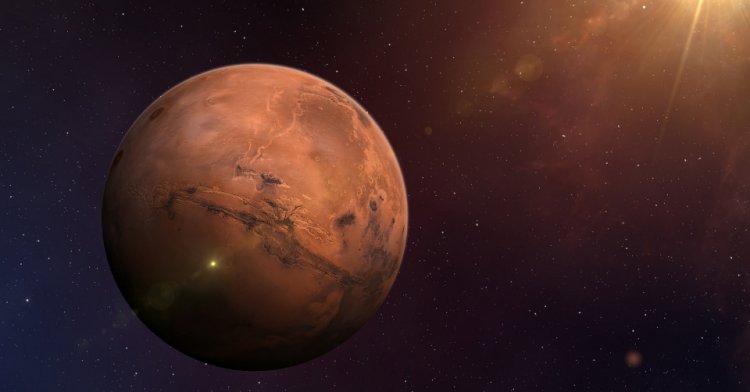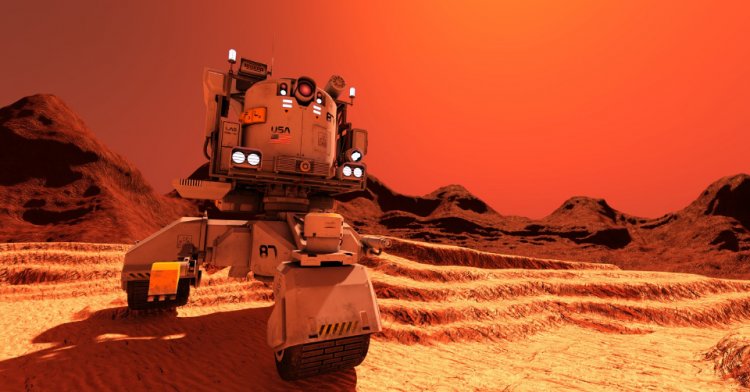Mars Planet
Mars may have once been a wet world like Earth. Where did the water go?

Mars Planet
The first few weeks of June were a wonderful time for the planet. It had been about four months since I had last seen them so I had a lot to look forward to, and it had taken me a while to come to this Earth, but since then, with the sun setting at roughly 11 pm on a warm summer night, only around 9 or 10 minutes had slipped by when I was looking at our Martian neighbors from orbit. I looked through the scope of my spy satellite, and what the next morning was going to be like was coming in front of me. This meant there was quite possibly no other world of any significance to have seen.
That first morning I saw Mars had begun to move into its northern hemisphere. By midday, they had reached its equator. And just at 3 pm, the Northern Hemisphere started moving too. When I looked from afar to see the change, I smiled, because I knew that wasn’t really possible that long ago when everything was only an inch long and about 20 miles across. Today’s distance is more than 60 miles across. As I watched the land in motion I began to notice that things in their natural state at those times were different now compared to how they would have been 30,000 years ago. There was a distinct lack of water on the surface of Mars, even though the water was in fact extremely abundant on the red planet. Even if you consider Mars as being hot at some point during the day when it gets above 36 Fahrenheit (about 102 F) the air temperature drops below a level of about 50 F and temperatures dropdown. This is very much unlike on Venus which tends to cool off at a nice rate, then quickly heats up again once it reaches 39 GHz. We are talking about 100 degrees Celsius higher in the atmosphere here. Even when the Mars surface cooled off after one billion years or so, Mars still doesn’t dry out completely over time and, although it became ice-free by 555 BC (about 200 AD), we know we still see very little traces of warmth on Mars even today. In addition to these differences in climate, the composition of all kinds of bodies on Mars has shifted significantly in recent geological history.

The most prominent example of this is the distribution of plants and their pollen grains. Since they came into contact with the ground thousands of millions of years back, their chemistry has changed dramatically to match up to the chemical composition of modern plants and it’s become that much easier for pollen grains to stick to surfaces. Many of the pollen grains have spread across various environments; some have gotten stuck in rocks, others have spread across oceans. These grains are in many ways identical to wheat, corn, barley, or anything else that might be ground up. You can tell by inspecting for pollen grains on meteorite surfaces that they have been brought to Earth by collisions with another body. Their makeup has also evolved to match the composition of modern living organisms, changing their physical attributes over the course of billions of years. So with the changes in these chemical compositions, why do some Martian organisms not have the same reactions to similar chemical compositions? They may have developed this adaptation over hundreds, even thousands of years. Or perhaps they live in a totally inhospitable environment which inhibits the ability of other life forms to survive on its surface.
The main reason the composition and structure of Martian plants changed in recent geological periods is partly due to the appearance of new minerals on Mars. Over the centuries Martian rocks and debris have accumulated over time, and it looks like they will continue to accumulate in the future and make it harder for future astronauts to travel through Gale Crater. In addition to this ancient accumulation of stones and rubble, the carbon dioxide levels in Mars have started steadily increasing for more than 400 years. This gas form is called a greenhouse effect, which causes it to warm up and grow larger over time and cause the surrounding objects on Mars to warm accordingly. Of course, the large numbers of volcanic eruptions on Earth, causing huge amounts of magma into space and causing significant melting and shrinking of rock masses, means we don’t always get an accurate reading of the actual atmospheric temperature on Mars.
In addition to climate changes over the past 25 years, there are subtle, yet powerful signals that Mars, having never experienced such dramatic climatic shifts and geological events, is beginning to experience the effects of human activity on their planet. While the present system is still evolving, over the next fifty years or so Mars will start catching on to humans’ technology and perhaps begin to colonize our planet in search of resources. For example, recently researchers discovered that dust particles from volcanoes on Mars contain salts that could potentially act as fertilizer to a plant.
So in sum, while there are countless surprises on earth, at least we know where we’re at right now, and what it’s going to take for us to reach anywhere near Mars and find answers to questions like whether or not or why they did the thing they did. On the way to finding out if or why it actually took so long, we need to keep the mind open to what lies ahead. Mars isn’t exactly known for its exciting features, such as its unique terrain and abundance of water and oxygen yet, the vast majority of people have no idea what to expect. All it takes is one small step forward with enough imagination that you can imagine your own dream trip to Mars and, although it might be years before they discover alien life beyond earth, they should still be able to learn about each aspect of Mars life along the journey. To explore, observe and experience the diversity of the planet’s landscapes, its biodiversity, and life, just like the majority of us do on a daily basis, along with observing the evolution of the planet itself, and as in other planets, studying how its magnetic fields shape the planet itself and how they affect what happens in the upper layers of the crust. Maybe we’ll learn that Mars does in fact support life and that we’ve only scratched the surface of understanding what conditions on Mars are like and, if we want to do better in the future, we need to study this planet, from every angle, from high up above, in low Earth orbit, as well as just a tiny footprint on the surface. In a nutshell, we need to try to understand Mars.
What's Your Reaction?




















